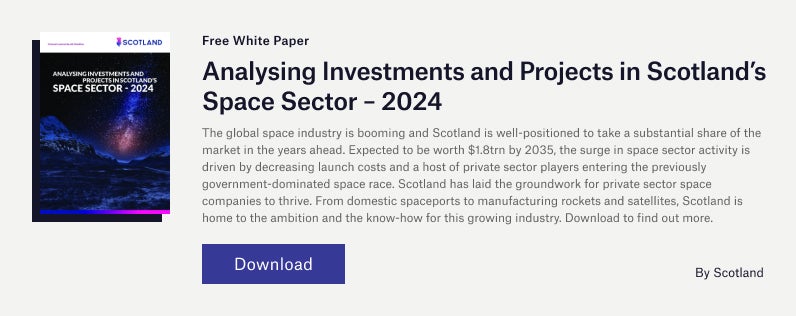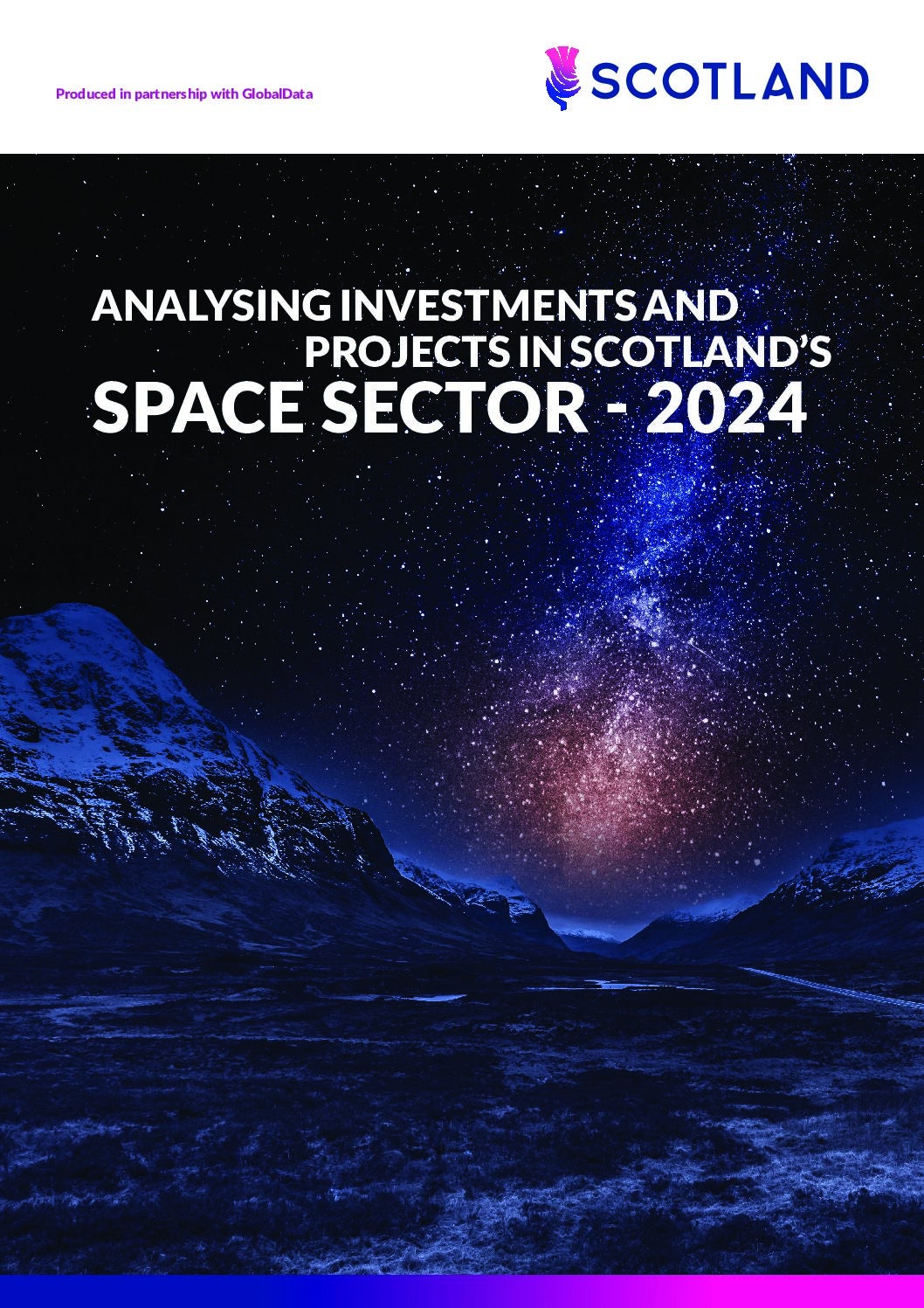
Extreme weather events in recent years have caused unprecedented damage to communities and infrastructure around the world. With this only predicted to continue as the effects of climate change worsen, it presents major challenges for the insurance industry and traditional policy models.
However, typical insurance claims currently take up to 18-24 months to process after the impact of severe weather, leaving many people to suffer the costs of repairing damage to their property and livelihoods alone. With the frequency of extreme weather events only forecast to rise over the coming years, it is essential for new solutions to meet changing demands.

To address such issues, space data sourced from satellites can be used to create parametric insurance plans that can forecast climate risk and deliver payouts much more efficiently.
Scotland is emerging as a leading region of expertise in space data, with Edinburgh having a growing reputation as the ‘space data capital of Europe’. Internationally respected universities and a supportive business environment are key factors in the city achieving this status.
Scotland has ambitions to launch as well as build satellites and analyse the data they collect. The region is therefore strongly positioned to become a globally recognised space data centre, with its domestic industry unrivalled anywhere else in Europe.
Space data is transforming climate insurance plans
Previously used largely for defence purposes, the ‘space as a service’ market is growing rapidly. According to Allied Market Research, the global satellite-based earth observation market was valued at $3.5bn in 2022 and is forecast to be worth $6.4bn by 2032, growing at a compound annual growth rate (CAGR) of 6.6%.
The insurance sector is one industry where ‘space as a service’ has driven new innovation in the face of climate change. Parametric insurance is emerging as an improved method of protecting customers’ holdings and ensuring payouts are made much more quickly in the aftermath of climate disasters. By establishing defined parameters, for example, flood levels or hailstone size, insurers can make payments instantly when these parameters are exceeded so that damages can be addressed rapidly.
Yet creating these indices and payment thresholds can be difficult, as empirical data cannot always offer a complete picture of locations on the ground. In remote areas, the impact climate events are having is even more difficult to quantify. Empirical data can be incomplete across a time series and regions, with analysis taking hours or even days.
These gaps and inefficiencies can be addressed by deploying space data, which can analyse all areas of the Earth’s surface. Combined with machine learning and artificial intelligence (AI), technologies can offer modelling predictions in line with past weather patterns.
Scottish companies lead on space data for insurance
Use cases of space data in insurance are set to contribute significantly to the market growth – and the growing interest in the sector is evident in Scotland. D-CAT is a Glasgow-based space data analytics company whose intelligence is deployed across a variety of industries. However, Phil McLachlan, D-CAT’s CEO, says space data’s applications to the insurance world are on the rise.
“The insurance industry is waking up to the potential of satellite data analytics,” he notes. “The data and analysis we can provide from space is providing real information on assets and monitoring assets that insurance companies have never had previously.
“Parametric insurance products require space data analytics because they’re monitoring large areas where they are providing policies for. If you are monitoring drought or flood, the ability to provide updates on what is being experienced by your client’s asset and provide that data is truly important.”
Producer next-generation satellites with enhanced capabilities
The space data expertise available in Scotland is also attracting international attention. Headquartered in Colorado, Weather Stream is a climate and weather data capture company whose analytics can be used in insurance applications. The company chose to expand in Edinburgh for the company’s second office to benefit from the city’s space data capabilities. Weather Stream has a team of specialists in procuring unique weather data from instruments they design and build themselves before mounting on satellites.
“We’re building everything in-house. So, that means we can create prototype designs much faster than anyone else can,” explains Richard Delf, chief product officer at Weather Stream.
The company’s innovative 12kg satellite design is a fraction of the weight of presently available satellites. This significantly cuts the cost of launching each satellite, enabling a constellation to be launched which increases the revisit rate.
“If you’re an insurance company and you’re trying to keep an eye on, say, a tropical cyclone, at the moment you might have observations every three hours from a satellite,” notes Delf. “But if you can get updates every 30 minutes to an hour, which we are realistically capable of in the near future, you have a much better understanding of where that cyclone is going to hit and what kind of damage it will cause in what particular location.”
Within the next year, Weather Stream hopes to launch a second satellite, GEMS 2. This second satellite will follow the path of its original launch, GEMS 1, and provide the company with even greater data coverage.
Scotland’s Highlands and Islands provide an ideal strategic location for vertical launches. The landscape benefits from wide, open areas and a large coastline – which reduces the risk of launch vehicle debris. In future, these sites are intended to enable Scotland to be a one-stop shop for all things space, with capabilities from satellite manufacturing and launch to data analysis.
Why many companies are choosing Scotland for the space sector
Talent is another reason why Scotland appeals to Earth observation companies. With world-leading universities in Edinburgh and Glasgow connected by a one-hour train ride, businesses establishing themselves in Scotland immediately have access to a pool of skilled academics and graduates. In fact, Delf worked for Weather Stream as an intern while studying at the University of Edinburgh, before becoming a full-time employee.
McLachlan co-founded D-CAT with other defence and aerospace experts who chose to base themselves in Scotland because of its strong academic expertise in space.
“They’ve got really great academics in terms of spectral science, which we use a lot of in creating our algorithms and extracting the valuable insights from the raw data,” explains McLachlan.
Another reason is the support available in the ecosystem. Space companies setting up in Scotland will also find themselves at the heart of a thriving and supportive business community.
“It’s a small enough sector that you can get your arms around it,” says Sharon Pryde, specialist for space at Scottish Enterprise’s Future Industries Team. “The companies all know each other, and they often support each other, even though they’re competitors.”
Additionally, Scottish Enterprise offers advice and innovation support to stimulate new businesses, including a free Net Zero Academy to help drive the adoption of sustainable practices.
As evidence of Scotland’s growing status as a global space centre, Space-Comm Expo is being hosted in the region for the first time. This year’s event will take place in Glasgow from 11-12 September 2024, offering Earth observation companies the opportunity to network and build key connections with Scottish businesses and institutions.
The decision to host the conference in Scotland this year recognises the country’s international importance in the emerging space data industry, offering a unique nexus of talent, research, and innovation.
To learn more about the Scottish space sector, download the free report below.



